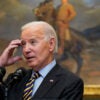On September 13, 2010, South Korea released an extensive report detailing North Korea’s responsibility for an unprovoked attack on the South Korean naval vessel Cheonan. The 313-page report provides overwhelming, irrefutable evidence that Pyongyang deliberately sank the Cheonan with a torpedo launched from a submarine. Although North Korea’s motives for this act of war remain uncertain, the evidence is beyond doubt.
The report describes in minute detail the results of a five-nation, two-month long investigation. The report uses scientific methods to inextricably link Pyongyang to the egregious attack. The release of the lengthy document, more extensive than a preliminary version revealed on May 20, was necessitated by doubt sowed by swirling conspiracy theories, some of which blamed Seoul or Washington for sinking the South Korean ship.
The report delineates physical evidence showing that the damage to the Cheonan was the result of an underwater explosion and resulting ‘bubble jet’ caused by a torpedo underneath the ship. Interviews with crew members and coastal witnesses describe an explosion and resultant water plume consistent with torpedo explosions. Seismic and air acoustic wave analysis also point to a shockwave and bubble effect from an underwater explosion. Review of explosive residue, tidal currents in the vicinity of the sinking, and the recovery of parts of a North Korean torpedo preclude other possibilities, including an underwater mine.
Despite overwhelming evidence, there are those determined to remain unconvinced because it is inconvenient for them to admit North Korean culpability. South Korean progressives, who harbor a benevolent view of the North Korean regime, aggressively seek to undermine any threat to their advocacy for Seoul returning to a policy of providing generous unconditional benefits to Pyongyang. As such, they reflexively blame the United States or the conservative government of Lee Myung-bak as a means of diverting attention from North Korea’s bellicose threats, provocative behavior, and violation of international agreements and U.N. resolutions.
South Korean and U.S. progressives also advocate searching for “an exit strategy” from the Cheonan as if the attack that led to the death of 46 South Korean sailors was an inconvenience that should be swept under the rug. Fortunately, Seoul and Washington see little use in re-engaging Pyongyang until it addresses South Korean security concerns and makes tangible steps toward resuming implementation of its denuclearization commitments.
Current and former U.S. officials report that China did not want to confront the Cheonan evidence since it would put Beijing in an uncomfortable position it wished to avoid. Russia’s investigation, based on a cursory exposure to the Cheonan, was ideologically, rather than scientifically, driven.
Pyongyang’s attack on the Cheonan is consistent with previous North Korean acts of terror and war. North Korea has repeatedly attempted to assassinate the South Korean president, attacked U.S. ships and planes in international territory, and blew up a civilian airliner. In early 2009, the regime engaged in a series of provocative acts that made clear it had no intention of engaging with Washington despite euphoric expectations that the change in U.S. leadership would cause Pyongyang to moderate its behavior.
The Obama Administration responded to North Korea’s belligerency by pushing for punitive measures. Pyongyang’s attack on the Cheonan underscored North Korea’s unwillingness to abide by even the most basic concepts of international behavior.
Despite recent media speculation of a perceived softening of U.S. policy toward North Korea, the Obama Administration does not appear willing to reduce pressure tactics until Pyongyang alters its behavior. The U.S. recently announced new sanctions targeting North Korean entities responsible for the Cheonan attack and engaged in prohibited actions.
The sanctions were a welcome development since they are an effective means of upholding international law and U.N. resolutions by:
- Signaling that there is a cost to abhorrent behavior;
- Impeding North Korea’s development of nuclear weapon capabilities by constraining imports of components and material;
- Curtailing Pyongyang’s destabilizing proliferation activities; and
- Inducing North Korea to return to its denuclearization commitments.
However, the strategy was weakly implemented because the Obama Administration remains reluctant to target the other end of the proliferation pipeline. The U.S. should identify and target non-North Korean entities that are complicit in violating U.N. Resolution 1874 and aiding Pyongyang’s illicit activities.
Now that clear, comprehensive, and compelling evidence about the Cheonan attack has been disseminated, it is time to move beyond the inane conspiracy theories endlessly peddled by North Korean apologists. Instead, policymakers and the public should focus on North Korea’s continuing threat to peace and stability in northeast Asia and discuss the proper means to redress it.
































2 Replies to “Investigation Affirms North Korea Attacked South Korean Ship”